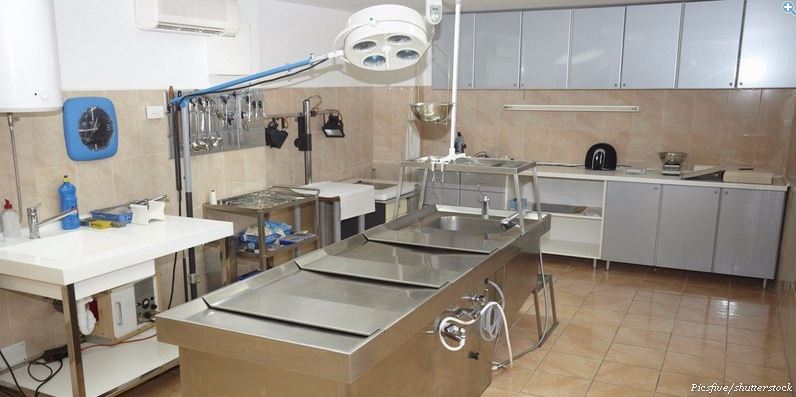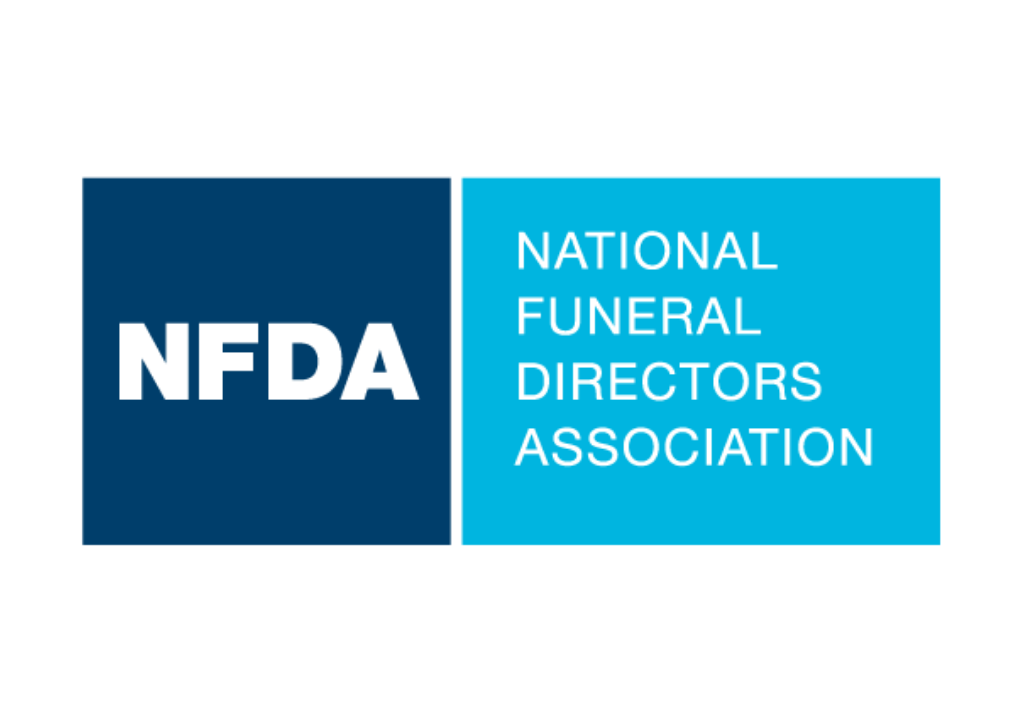Here’s what it’s REALLY like to be an embalmer
Article originally appeared on Business Insider
Preserving dead bodies for a living might seem weird or creepy or depressing. “But it’s actually one of the most rewarding jobs in the world,” says John “Jack” Mitchell IV, a sixth generation funeral director and embalmer.
After graduating from Lehigh University with a bachelor’s in business management in 1993, Mitchell returned home to start serving his apprenticeship at his family’s funeral home while attending the Mortuary Science program at Catonsville Community College outside of Baltimore.
“I attained an Associate in Arts degree in Mortuary Science there, completed my apprenticeship, passed the state and national board exams, and became a licensed mortician in 1995,” he tells Business Insider. “In Maryland, the license was all-encompassing. Once you have a mortician’s license, you are able to conduct funeral arrangements, direct funerals, and embalm.”
Today Mitchell continues to run the family business, which opened in Baltimore in 1837, and knows a thing or two about the embalming process.
We were curious, so we recently asked Mitchell about a typical day at work, the best and worst parts of the job, and the biggest misconceptions. Here’s what he said:
What is an embalmer, exactly?
“An embalmer is someone who takes the measures necessary to preserve a human’s remains for a period of time. This may be done so that the deceased will be preserved and make a comfortable appearance for a viewing, or sometimes because state laws simply require that embalming, and the resulting preservation, must be done due to the length of time between the death occurring and the final disposition of the remains. There are also situations when even absent an open casket viewing, a family simply feels better that their loved one’s remains be embalmed and preserved prior to disposition.”

Courtesy of Jack MitchellMitchell-Wiedefeld Funeral Home in Baltimore, Maryland.
When you know you wanted to be an embalmer?
“Growing up, I always knew I had the family business to go into. I have an older sister who never had much interest in the family business, so I knew it was mine to run one day if I so chose. During that time, I never found anything, any other vocation, that appealed to me so much that I considered doing it instead of going into the family business. So I didn’t really have a “moment” when I decided to become a funeral director/embalmer. It was just the underlying possibility all through my upbringing.”
How does one become an embalmer?
“There is a specific schooling and certification process to become a licensed embalmer. Each state has its own laws as to the level and type of schooling required. The laws also vary on apprenticeship requirements. Once all of those requirements are met, the National Board Exam must be passed and then a embalmer/mortician/funeral director’s license may be applied for.”
What’s the hiring process like?
“For me, there was really no interview process since I was coming into the family business. But when I hire, it’s the traditional process. I typically schedule an interview with a student looking for an apprenticeship and do a face-to-face meeting, and then follow up with their references, especially if they have worked at another funeral home or at least in a customer service or a caring-for-others type of industry.”

Jack MitchellThe room where embalming takes place.
What’s a typical day on the job?
“An embalmer will usually start the day by finding out if any deaths have occurred overnight and whether any of those people need to be embalmed.
Next they will look at the schedule of the day’s visitations to see if any of the deceased need to be prepared and in their viewing rooms by a certain time.
“If there are viewings that day, getting the deceased ready and into their rooms will usually take first priority, then doing embalming of any deceased that have arrived during the night will follow.
“Sometimes, a death that has occurred in a hospital will need follow up to get released and then the transfer to the funeral home will take place so that embalming or preparing for cremation may happen.
“Before a deceased person is cremated, he or she must be positively identified at the funeral home. The embalmer will ‘set the features’ of the deceased so that family who are making identification are looking at a more comfortable appearance of their loved on than just how they looked the moment they died.
“Setting features is not embalming, but merely washing the deceased’s face, and closing the eyes and mouth and brushing of the hair. While making identification is not a viewing per se, it is still the last time the family of the deceased will see their loved one, so a modified version of preparation for a viewing is undertaken.
“If at all possible, embalming should take place right away after the deceased has arrived at the funeral home, though a delay of a matter of hours will not affect the desired outcome of the preparation procedure very much.
“So when a death call comes in and the remains are released to the funeral home, the embalmer can expect to get to work right away. Some funeral homes do have their embalmers come in during the night if a deceased person is released. Others will wait until the morning, often having the embalmer come in early to get started working.”
Most rewarding part of the job?
“By far the most rewarding part of the job is the gratification that families show for all that you have done for them. Some of them really do appreciate the difficult nature of the job, that you are available to them 24 hours a day, 365 days a year, that you deal in loss, sadness, and grief on a daily basis, and that what you have done for them was so helpful, sometimes suggesting that they could not have ‘made it through’ without you.
“This is also evident when they call repeatedly for each and every family member when the time comes. You know that, at that most difficult time, they thought of you as the one who they most wanted to take care of them. It makes the long and odd hours and difficult stresses that we ourselves feel very much worth it.”
Most difficult part of the job?
“The most difficult part of the job is taking care of the families who are going through an especially tragic situation, like the death of a child, or a death that is very sudden and unexpected.
“We are counted on not to just take care of the funeral arrangements, but to be a steadying force at a terribly tumultuous time. It is quite taxing on us as we have emotions, too.
“We also can have uncomfortable situations with families who have had major falling outs in the past and are at odds over the funeral arrangements among other things. We want to steer clear of the family squabbles, but sometimes it is not easy. Fortunately those situations are few and far between.”

Jack MitchellJohn “Jack” Mitchell IV.
Is working with the deceased emotionally draining?
“It is not so much working with the deceased that takes a toll on us as it is working with their loved ones who are experiencing the loss.
“As an embalmer, yes it is difficult when working on a child whose body only comes halfway down the embalming the table, which was clearly built for full-grown adults. It is sad to place such a light body into a casket needing no help at all. But that is minor in comparison to showing the family into the room and witnessing their reactions to seeing the little one in the casket. It definitely takes a toll on us. Within the profession, the ‘trade term’ for it is compassion fatigue.”
What’s the job market like for embalmers right now?
“There is a good demand for good help in our profession right now. Though more people are being cremated as a means of final disposition than in the past, which means that a smaller percentage of deceased are being embalmed — a trend that will definitely continue — the total number of deaths occurring each year in the US is also increasing and will continue to do so, especially as the Baby Boomer generation reaches its golden years.
“While I wouldn’t say that opportunities are exactly abundant right now in terms of finding an apprenticeship at a funeral home, there are definitely possibilities out there. And in the profession, we find that good help is hard to find. So an aspiring funeral director/embalmer who shows some aptitude should be able to find his or her place.”
Favorite on-the-job memory?
“At one of the more sad services that I have been involved with, that of a stillborn child, the parents ended the ceremony at the graveside by doing a butterfly release. One of the butterflies flew to me, landed on my chin, and would not let go. The father of the child kept trying to lift it off my face, much to everyone’s amusement, including the priest, who was a good friend. It was a perfect moment of levity, at what was an otherwise sad moment, the conclusion of the service for this baby girl. It was nice that there was a little laughter before everyone said their good-byes and parted ways. I was more than fine with it that it was partly at my expense.”

Jack MitchellAn embalmer’s tools.
What might surprise people about embalming?
“Most people would be surprised at how minimally invasive the actual embalming process is.
“So many people have said to me that they assume that we remove organs and/or autopsy the remains, or that all deceased are autopsied. The fact is that remains are rarely autopsied and that in order to do a full and complete embalming, we usually only need to make one incision, about four inches long, and to use one other instrument that enters the body, creating an opening smaller than a dime in circumference.
“This can vary from case to case. Sometimes, more incisions need to be made. But we do not even see any of the organs themselves.”
Final thoughts?
“For us, our job is not so much a job as it is a calling. Those who are thinking about getting into it for the money should try something else. There aren’t that many professions out there where your job isn’t just what you do, it’s who you are. That is us and that is funeral service.”




